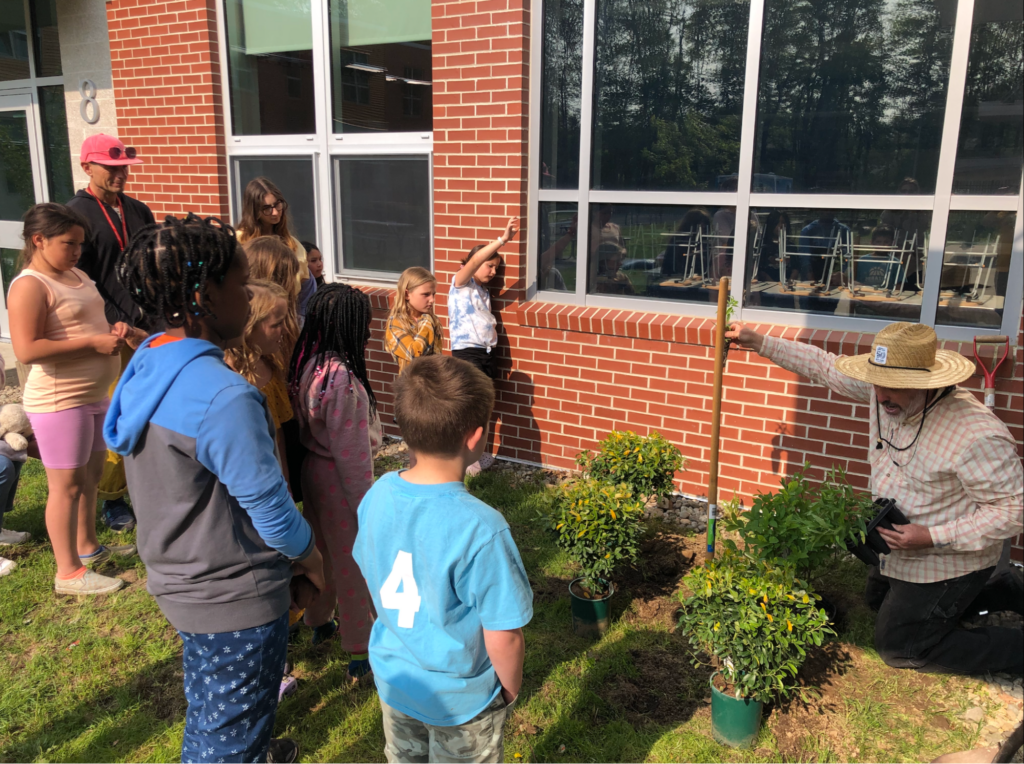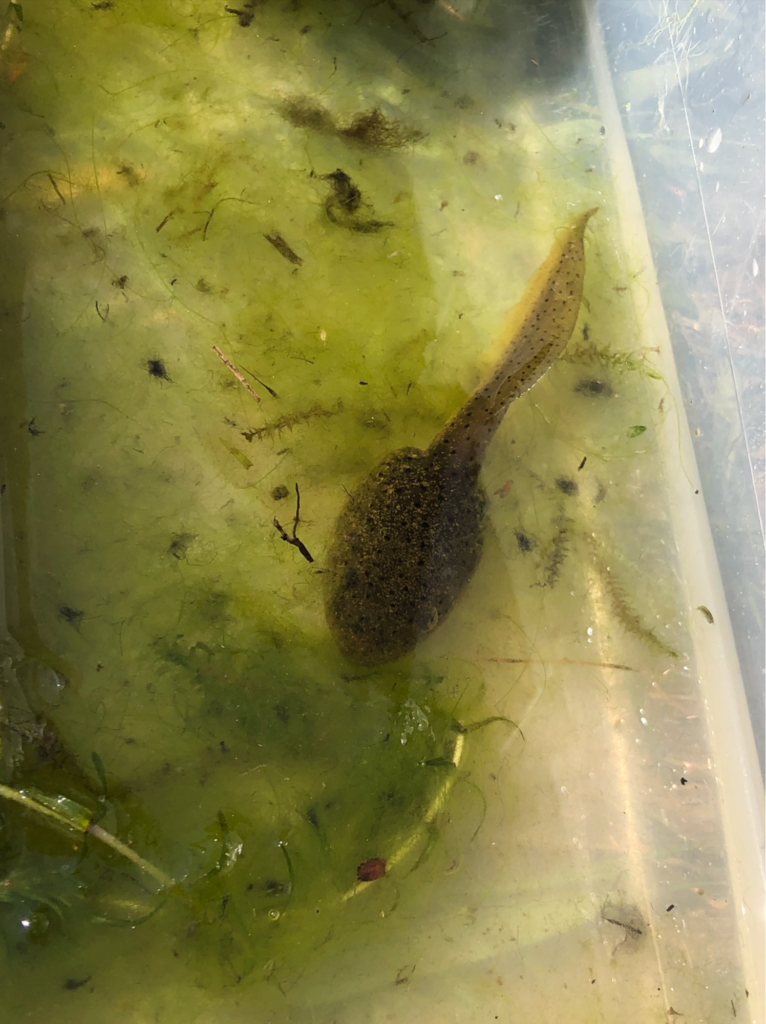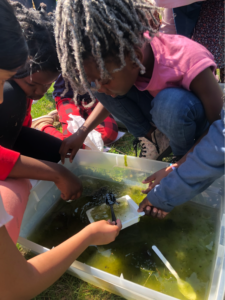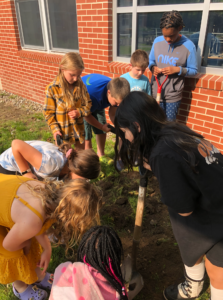
As the school year comes to a close, here are some highlights from our partnership with LearningWorks, an after school academic enrichment program for elementary school students.
Last fall, as an environmental educator for Maine Audubon, I began visiting students at Portland’s Reiche Community School once a week for what we quickly nicknamed “Wildlife Wednesdays.”
The students were excited to learn about nature and wildlife in Maine on a regular basis, and all wanted to learn more about their favorite animals. For the first few months, we learned about owls, winter strategies for Maine wildlife, and other animal adaptations. Soon enough, the Reiche elementary students would greet me weekly with an excited “It’s Wednesday!”, eager to see what mystery animal mount I had with me.

As Reiche’s Wildlife Wednesdays became an anticipated part of each week for the students, we also began visiting the LearningWorks students at Talbot and Rowe elementary schools each week starting in late February. Soon enough, students at those two schools were also enjoying time to learn about and explore nature. At all three schools, we attempted to go outside each week, making the outdoors our classroom. With each excursion, we’d make new and exciting observations in the schoolyard, reminding us that nature is everywhere!

This spring was filled with lots of exciting outdoor activities and lessons. Students at both Rowe and Talbot were able to spend an afternoon ponding, where they learned about many aspects of a pond ecosystem and the unique life cycle of frogs. For many of them, it was their first time seeing tadpoles or frogs! Students were also able to observe different aquatic plants and the various macroinvertebrates that live in them, using magnifying glasses to observe and identify different aquatic insects, like dragonfly nymphs.

For the final weeks of programming, students learned about native plants and completed planting projects to mark and celebrate the end of the school year. The Reiche students celebrated their time together with a final field trip to Kettle Cove State Park in Cape Elizabeth, where they had planted native shrubs back in the fall. Students were excited to check on the plants they had planted, and were eager to plant new native plants as well. They learned about the importance of Shadbush, which blooms in May and marks the return of many migratory fish, such as Shad, to their natal streams to spawn. After digging, planting, and watering, they got to run to the beach and check out the ocean too.
Rowe and Talbot students planted native plants at their schools. At Rowe, we planted Northern Spicebush, Inkberry, and Witch Hazel in the school courtyard and Living Classroom. Talbot students also learned about and planted Northern Spicebush and Inkberry in their school courtyard. In addition to planting, students learned about the different native plant species and the many insects that utilize them as their larval host. Students were excited to make a difference in their local community, as well as support pollinators and other Maine wildlife in the future.

What started as Wildlife Wednesdays turned into three days of outdoor learning and afterschool enrichment for approximately 30 students in grades 2-5 at three Portland elementary schools. They really looked forward to our afternoons of exploring, discovery, and getting their hands dirty, and so did I!
